Used, Refurbished, or Rebuilt Car Parts What’s the Real Difference?
When you’re shopping for car parts online, it’s easy to feel like you’re reading a different language. Sellers use words like “used,” “refurbished,” and “rebuilt” interchangeably, as if they all mean the same thing. But they don’t — and those differences can determine whether your repair lasts a week or a decade.
Understanding these terms isn’t just for mechanics. It’s for anyone who wants to save money without taking unnecessary risks. If you’ve ever wondered what those labels actually mean, here’s a breakdown that separates myth from reality and helps you buy smarter.
The “Used” Part: Original, Untouched, and Often Underrated
A used car part is exactly what it sounds like — a genuine component removed from another vehicle and resold in its existing condition. It hasn’t been opened, rebuilt, or internally serviced. At most, it’s cleaned, tested, and inspected before sale.
That may sound risky, but when sourced correctly, used parts can be the most reliable option available. Why? Because they’re original equipment (OEM) — the same brand, materials, and tolerances that came from the factory. Unlike budget aftermarket parts, they’ve already proven themselves under real-world conditions.
A few examples make this clear:
- A used OEM alternator from a low-mileage donor car can outlast a brand-new, low-cost aftermarket one.
- A used mirror assembly fits perfectly, while an aftermarket copy might rattle or misalign slightly.
- A used ECU or airbag module has the exact connectors and coding compatibility your vehicle expects.
Used doesn’t mean unreliable — it means authentic. Of course, it still matters where you buy it. Reputable dismantlers test parts before listing them and provide donor details so buyers know what they’re getting.
If you want to see how transparent listings can be, take a look at Ovoko. They present used parts with VIN matching, compatibility data, and donor information — the kind of context that turns “used” into “proven.”
Refurbished: The Light Touch That Extends a Part’s Life
Refurbished parts sit one level above used. These components have been partially serviced to restore functionality and appearance. Typically, the seller cleans the unit, replaces minor wear components, tests it thoroughly, and then resells it with some level of warranty.
Think of it like reconditioning a phone. You don’t rebuild the motherboard; you replace the battery, clean the ports, and reset the software. The same logic applies to car parts. A refurbished alternator might get new brushes or bearings. A refurbished brake caliper could receive fresh seals and paint. The core of the part remains the same — it’s just refreshed for another round.
The upside is value. Refurbished parts often cost 40–60% less than new OEM replacements but deliver comparable performance. The downside is variability. Because “refurbished” isn’t a tightly regulated term, one seller’s definition might differ from another’s. Some genuinely overhaul components, while others just clean them up and test them.
If you buy refurbished, pay attention to:
- What has been replaced or serviced
- Whether testing data is provided
- How long the warranty lasts
A seller who confidently states “new bearings, brushes, and voltage regulator replaced” inspires far more trust than one who simply says “tested and working.”
Refurbished parts are ideal for components with predictable wear patterns: alternators, starter motors, hydraulic pumps, and window regulators. They offer the sweet spot between cost savings and reliability — provided the refurbishment is done properly.
Rebuilt: The Full Overhaul
Rebuilt parts go a step further. They’re fully disassembled, cleaned, inspected, and reassembled using new internal components wherever necessary. The goal isn’t just to restore function — it’s to return the part to as-new or better condition.
You’ll often find rebuilt engines, transmissions, brake calipers, steering racks, and turbos. During rebuilding, specialists measure every tolerance, replace bearings, seals, and worn internals, and sometimes even apply design improvements. The process can include machining surfaces, updating materials, and using upgraded components that solve weaknesses in the original design.
Because of the labor involved, rebuilt parts cost more than used or refurbished ones. But they come with serious benefits:
- Predictable lifespan similar to a new OEM part
- Detailed testing and documentation
- Warranties ranging from six months to several years
For high-value systems like powertrains or hydraulics, a properly rebuilt component is often the best long-term investment. It combines OEM quality with known condition — something a “new” aftermarket part can’t always promise.
One thing to watch for: the difference between rebuilt and remanufactured. Remanufactured implies the part has been restored by, or to, the standards of the original manufacturer, often under certification. Rebuilt, while thorough, doesn’t always mean factory-approved. Both can be excellent, but documentation is what tells you which is which.
How to Choose: The Rule of Context
So which should you buy — used, refurbished, or rebuilt? The answer depends on context: the part type, the vehicle’s age, and your tolerance for downtime.
Used parts make sense for:
- Exterior and interior items (mirrors, seats, trim)
- Tested electricals (window switches, ECUs, sensors)
- OEM components that are hard to find new
Refurbished parts are smart for:
- Common wear-and-tear components like alternators and starters
- Hydraulic parts (pumps, regulators, steering units)
- Situations where you want warranty coverage at moderate cost
Rebuilt parts shine when:
- The component is complex, expensive, or safety-critical
- You plan to keep the vehicle for many years
- You want reliability approaching new OEM quality
A good way to think about it:
- Used gives you authenticity.
- Refurbished gives you value.
- Rebuilt gives you confidence.
Each has a place, and choosing wisely can save thousands over the life of a car.
Why Transparency Matters More Than Labels
Labels only help if they mean something. That’s why the best suppliers focus on data. You should see the OE number, test results, donor information, and a clear warranty policy. These details create trust — not the word “used” or “refurbished” alone.
Unfortunately, vague listings are still common. Many sellers copy-paste manufacturer descriptions or skip fitment details entirely. That’s why buyers should favor marketplaces that emphasize verification. When you can filter by OE number and VIN compatibility, the chances of ordering the wrong part drop dramatically.
Transparent marketplaces like Ovoko show how this works. Listings include donor vehicle information, photos from multiple angles, and specific compatibility notes. For mechanics and DIY buyers alike, that clarity changes everything. You know what you’re getting, and if something doesn’t fit, you can prove why.
The more data you demand, the better the entire ecosystem becomes. Every verified listing raises the bar for sellers who follow.




